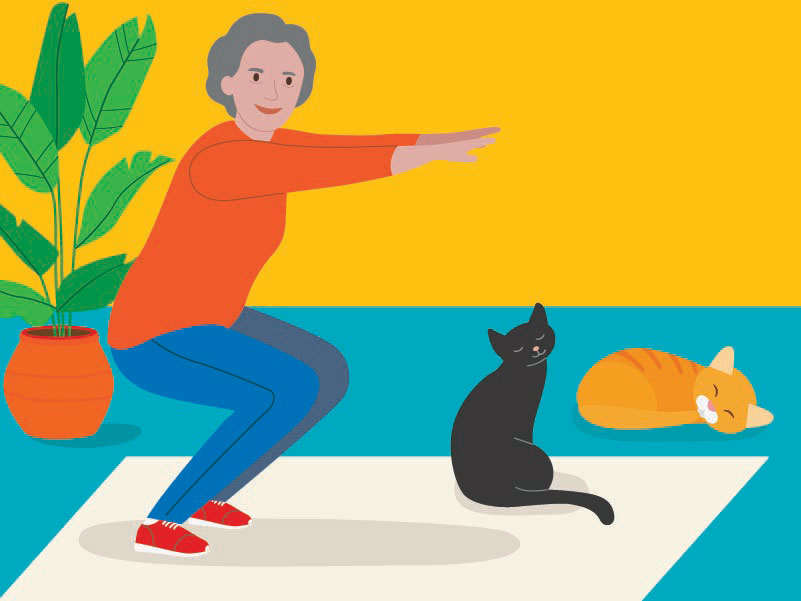
“When will I die” is an important — if largely unanswerable — question that affects retirement and financial planning. Most people want to ensure they don’t run out of money before their time is up.
Considering this question and ways of increasing longevity can be an important step in helping your clients get the most from their twilight years.
When thinking of life expectancy, many people tend to think of the Canadian average, currently pegged at 82 years by the World Bank Group. But that’s not the best indicator of the length of time a person will live, according to Doug Manuel, a medical doctor and senior scientist with Project Big Life, a team of doctors and scientists from the Ottawa Hospital, the University of Ottawa and other Canadian institutions.
“That’s the life expectancy that would be expected if people are subjected to the mortality rate from the previous year,” Manuel said. “That’s different from how long you’re expected to live if you’re born today or if you’re a certain age today.”
General life expectancy typically doesn’t account for health factors, which play a significant role in determining whether people live shorter or longer lives.
That is why Manuel and his team have developed online calculators for life expectancy, dementia probability, and heart attack and stroke probability (all available at projectbiglife.ca).
The calculators help users estimate whether they’ll live long enough to reach major milestones or life goals, such as watching a grandchild get married. The calculators also can help identify the lifestyle factors users may need to change in order to improve their chances of reaching those longevity goals.
“A lot of people think it’s your genetics that [predict life expectancy], but really the most important thing is your health behaviours,” Manuel said. The “big four,” he added, are smoking, alcohol, food and exercise.
Those lifestyle factors can determine whether seniors will experience health conditions that lead to premature death, said Samir Sinha, a medical doctor and director of health policy research at the Toronto-based National Institute on Aging.
“The No. 1 issue [that affects mortality risk] is the presence of chronic illnesses,” Sinha said. “But, if you do survive those and manage to live healthy and not develop things [such as] diabetes or cardiovascular disease, and you luckily don’t get accosted by cancer along the way, then there are other illnesses that are likely to catch up with you over time, such as dementia.”
Sinha noted, however, that people lucky enough not to be affected by dementia will probably live to at least age 100.
According to Statistics Canada, cancer, heart disease, chronic lower respiratory disease and cerebrovascular diseases (such as stroke) are the leading causes of death among people aged 65 to 74, as of 2019.
For seniors aged 85 and older, the leading causes were heart disease, cancer and cerebrovascular diseases — but also accidents or “unintentional injuries.” After chronic lower respiratory diseases, Alzheimer’s disease was the sixth leading cause of death. (Sinha noted these studies were conducted before Covid-19, which was “likely one of our leading causes of death this year and last.”)
Improving lifestyle factors to reduce mortality risk, Sinha said, does not require “pumping iron or running marathons.” Instead, your clients should realize that many societal factors promote inactivity, poor nutrition and a lack of balance in our lives, which in turn create shorter life expectancies.
Changing these lifestyle behaviours can make a huge difference, Sinha said. For example, a senior who has been smoking for decades significantly reduces their risk of dying from smoking-related illness within a few years of quitting. And retaining good vascular health and addressing any hearing impairments will help reduce chances of developing dementia.
Parminder Raina, Canada Research Chair in geroscience with McMaster University in Hamilton, Ont., said he sees a higher number of falls among the elderly because they have balance problems or their eyesight has weakened. Slippery sidewalks and poorly maintained home environments can cause injuries.
“Upgrading a home to prevent injuries is important, like securing rugs or putting grab bars in a washroom,” Raina said.
Social interaction also is important. “As we age, we start to lose our networks. Our relatives and friends of the same age are moving on,” Raina said.
While the pandemic has created challenges regarding social connections, Raina said, seniors can minimize their isolation, when possible, by participating in community activities, volunteering, developing hobbies and creating new social networks.